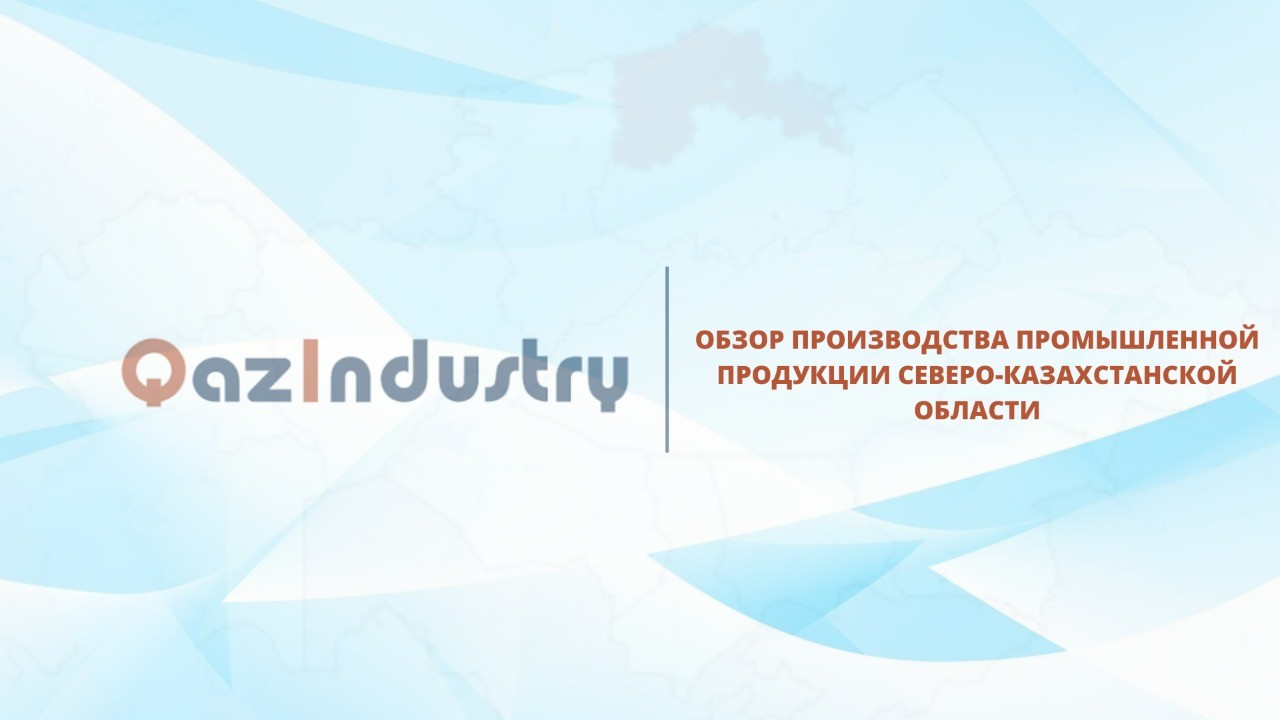North Kazakhstan region is one of the regions of the country with a developed agriculture, the share of which in the structure of GRP is 27.9%. Industry is in second place with a share of 13.4%.
In the country's manufacturing sector, North Kazakhstan has the lowest share of the country 1.2% and is represented by food production (58.9%), machine building (23.9%), manufacturing of other non-metallic mineral products (4.3%), etc.
The largest contributions to the region's manufacturing production in Kazakhstan up to 2020 were in industries such as: production of computers, electronic and optical products (21.8%), production of other vehicles (12.6%), and food production (7%).
NKO is one of the top three leaders of the national production of 27 manufacturing goods, including in the production of wheat starch (100% of national production); ultraviolet or infrared radiation equipment (100%); computers, digital, portable machines weighing no more than 10 kg (97.1%); non-self-propelled freight cars (78.7%); padlocks (65.3%), processed and liquid milk (31.5%).
The region's specialties remain agriculture, forestry and fishing, public administration and defense, water supply, health and social services, education, energy, transport and warehousing, and real estate operations.
The trade turnover in 2020 amounted to 778.7 million US dollars (import - 68.5%, export - 31.5%). Exports consist of agricultural products - 61.1% and manufacturing industry - 31.4% (of which food products - 85.3%, represented by wheat or wheat-rye flour; milk and cream, not condensed and without added sugar; cakes and other solid waste from rapeseed). About 56% of SKR exports go to Afghanistan (wheat flour); 28.6% to Russia and 9.4% to China, which mainly imported milk and cream, raw rapeseed oil.
The imports consist of mechanical engineering goods 40.9% (other machines, units and industrial or laboratory equipment with electric or non-electric heating for the processing of materials by processes; portable digital computing machines weighing not more than 10 kg, etc.) and food industry 11.7%, mainly from Russia (73.2%), China (6.3%) and Germany (3.4%).
The share of the investments from the total volume in the basic capital of the country - 2,3%; in the structure of investments in industry the largest share accounts for the manufacturing industry - 48,7%, which is associated with the realization of large investment projects, among other things. Within the second five-year period of the State program of industrial-innovative development in the region there were introduced 39 projects to the amount of 24 billion tenge, created workplaces - 1300. The share of projects in the total volume of manufacturing industry of the region is 40%.
In the last years, the average level of economic concentration of the region shows a growth as well as the level of localization of production increased from 0.45 to 0.48 for 2016 - 2020 years, which shows the difference in the structure of the region from the structure of the country's economy as a whole.
The assessment of the detected comparative advantage of the region allowed to identify the goods with the greatest potential for cooperation, on the basis of such cooperation the mutual exchange of goods with the countries will be developed in the medium term.
The analysis of the region's industrial cooperation potential with bordering territories of the Russian Federation allowed to identify 121 groups of goods in the sectors of machine building, metallurgy, and production of finished metal products. Thus, the largest possible export is marked
to Kurgan region: in the production of centrifugal pumps for pumping liquids, load-lifting equipment and its parts, agricultural machinery, machines for the mining industry, oil and gas field and oil and gas refining equipment;
to Omsk region: in the production of parts and accessories for machinery aimed at agriculture;
to Tyumen region: in the production of machines and equipment for pumping liquids, other ferrous metal products, pipes from subsoil.
A group of products with a competitive advantage was formed to identify niche areas in the manufacturing industry, that promote deeper specialization of the region, as well as the expansion of production and supply chains, and the level of technological complexity of goods production was determined using the "Product Complexity Index", according to which 10 goods are from the industries of mechanical engineering, food production and metallurgy.
The positive index value is observed for 3 items: plates, sheets and belts of agglomerated or reconstructed micas; other railway or tramway wagons, freight non-self-propelled, covered and closed; hopper cars. it is supposing that besides diversification of the export basket of the region, it is possible that the technological degree of its technical complexity will also increase.
The group of goods with a negative value of the Index has opportunities to deepen the production: unprocessed lead; wheat or wheat-rye flour; milk and cream, not condensed and without sugar or other sweetening compounds; wheat waste; cereals and wholemeal flour made from other cereals; cakes and other solid waste, from rape seed, or colza, low in erucic acid; cakes and other solid waste obtained by extracting vegetable fats or oils, from flax seed.
In addition, the territory of SEZ "Qyzyljar" has a potential to locate a number of industries that can be provided with the necessary infrastructure. For example, the production of equipment and devices for filtering or purifying water, as a project is attractive for location in the Special Economic Zone, taking into account the resource and raw material base (geographical accessibility to raw materials (Russia), the regional demand for products (Pavlodar region, East Kazakhstan region), a close location of the economic zone to major consumers). The field of use of industrial filters is very wide. They are used in water treatment for supplying large factories and plants, in the gas processing industry, in the collection of oil and oil-containing products, in the metallurgical and chemical industries and in the automotive industry.
The realization of this project will provide up to 50% of the country's domestic demand; the estimated export volume is 10-20% of the production, mainly to the Caspian shelf countries: Russia, Azerbaijan, and Iran.





